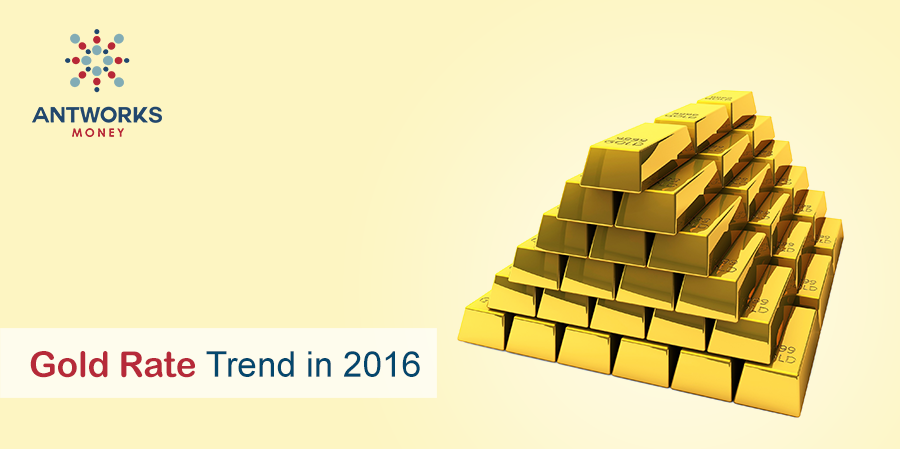
Gold Rate Trend in 2016
Gold prices saw a lot of volatility and price changes during the year. The metal started the year well and barring a few minor fluctuations, performed well in the first quarter of the year, rising to some of the highest rates in 2016. Gold’s lowest prices for the year were recorded in January when it traded at Rs.2,550 per gram on the 5th of January. Prices improved as the month progressed. Weak markets and increasing demand for gold from industry contributed to pushing prices higher. The strike by jewelers also led to prices stagnating during April. Prices continued to rise in the second quarter, as market imbalances and rising retail demand kept prices steady.
Overall Gold Price Trend in India in 2016:
| 1st January | Rs.2,585 per gram |
| 31st December | Rs.2,844 per gram |
| The highest rate in 2016 | Rs.3,248 per gram 10th August |
| Lowest rate in 2016 | Rs.2,550 per gram on 5th January |
| Overall performance | Incline |
| % change | +9.10% |
Quarterly Gold Rate Trend in India in 2016:
Gold Price Trend (January 2016- March 2016)
| Prices | Rs.2,585 (1st January), Rs.2,948 (31st March) |
| Highest/lowest | Rs.3,049 (26th February), Rs.2,550 (5th January) |
| Major influencers/events | High seasonal demand, jewelers’ strike |
Gold prices at the start of 2016 were close to Rs.2,600 per gram, with the prices increase as demand increased. The wedding season and festive season led to higher demand from the retail sector and jewelers. Slight fluctuations in European markets due to geopolitical tensions led to investors putting their money into bullion. Prices rose to around 2,770 per gram as January drew to a close, as prices were on a prolonged ascent.
Gold prices in February rose significantly as demand spiked due to high demand from both the domestic as well as international sectors. Domestic demand rose due to increased buying by consumers and greater demand from industry. Gold began February trading at Rs.2,712 per gram and the price increased for most of the month. International demand continued to be high due to stock markets vacillating as a result of the refugee crisis and European governments’ efforts to deal with the influx.
Prices crossed Rs.3,000 for the first time in the year, as gold reached a high of Rs.3,049 per gram, continuing its ascent.
Prices in March also rose on strong demand, though growth was slow. Gold traded above Rs.3,000 for the whole month as uncertainty over the budget kept Indian stock markets jittery. The strike by jewelry associations against the levying of 1% excise duty on gold jewelry sale soon became a nationwide one, which affected demand, tough prices were more or less constant.
The government’s order mandating disclosure of PAN details for purchase of non-silver jewelry over Rs.1 lakh resulted in fresh protests, which crippled the jewelry industry, though demand by industry continued unabated.
Gold prices were quite stable in spite of the upheaval surrounding the strike, with the yellow metal trading at Rs.3,030 per gram at its highest rate for the quarter. Positive cues from international markets kept prices high since domestic demand was lower than expected.
Prices fluctuated slightly as the U.S. markets performed well, which offset demand from Europe and Asian countries, though the dip in price was minimal.





